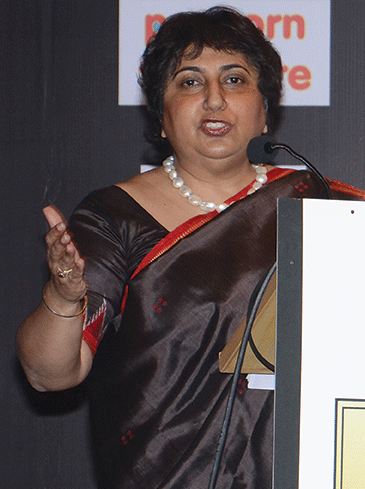KEYNOTE ADDRESS: RENU SINGH
NECCE opportunities and challenges
 After decades of hesitation in September 2013, the Congress-led UPA II government approved a National Early Childhood Care and Education (NECCE) policy paper of the Union ministry of women and child development (WCD).
After decades of hesitation in September 2013, the Congress-led UPA II government approved a National Early Childhood Care and Education (NECCE) policy paper of the Union ministry of women and child development (WCD).
By adopting the NECCE policy draft, the Central government accepted an important principle of latter day education enunciated by Nobel laureate Dr. James Heckman in the millennium year (2000) that “early learning begets later learning and early success breeds later success, just as early failure breeds later failure”, and the UNESCO EFA Global Monitoring Report which proclaimed ECCE as the bedrock of education for all and further initiatives. The NECCE policy is overdue acknowledgement that a large number of children in India are growing up in disadvantaged family contexts, and are therefore “at risk” in terms of developing to their full potential.
However it’s a credit to Indian educationists and policy formulators that India has the distinction of having launched the world’s largest integrated child development programme for infants and lactating mothers way back in 1975 — Integrated Child Development Services (ICDS) — under which 1.3 million anganwadi centres have been established across most habitations countrywide. Available data indicates that 64.5 percent of three-year-olds and 76.3 percent of four-year-olds in rural India are attending anganwadis.
The significance of NECCE is that for the first time, special emphasis has been given to developing and expanding the education component of ICDS with all state governments directed to develop their own ECCE curriculums. The recently restructured ICDS also makes a clear statement regarding conversion of all anganwadis into “vibrant ECCE centres” — a very positive development for the country’s hitherto neglected 158 million children in the 0-6 age group.
Nevertheless, there’s much work to be done before the NECCE policy is translated into action. The first challenge is to ensure Article 21-A of the Constitution which legislated elementary education as a fundamental right of all children in the 6-14 age group, is amended to include all children upto 14 years of age, rather than restrict the fundamental right to education to 6-14-year-olds. This is critical since the constitutional amendment of 2002 ignores Article 45 which enjoined the state to provide free and compulsory education to all children below the age of 14 years.
Another lacuna is that ICDS provides for — the admittedly cursory — education of three to six-year-olds while 23 of the 35 states/UTs have mandated five years as the official entry age for primary school, thus creating an overlap and possible double counting. A recent analysis indicates that 20 percent of children entering primary school in states that have six years as the entry age and a lesser percentage that have five years, are under-age. This needs urgent attention, because under-age children are unprepared to bear the pressures of primary schools where child-centric pedagogies are a rarity. In the circumstances it might be a good idea to encourage a year of pre-primary education to be added to every primary school under the Sarva Shiksha Abhiyan (‘education for all’) programme.
A national deficit of skilled ECCE experts and master trainers is another lacuna which makes it very difficult, if not impossible to develop curriculum standards, monitor quality of services and provide meaningful early childhood education in anganwadi centres, unless investment is made to build capacity of the system. Regional centres of NIPCCD (National Institute of Public Cooperation and Child Development) under the WCD ministry need to be strengthened and states encouraged to develop resource hubs in each district to support and monitor quality early childhood education in the government and private sectors.
Indeed, this is an opportune time for the WCD ministry to establish an ECCE Commission to support states in this endeavour.
Although conceived as a comprehensive early childhood intervention, the ICDS programme faces a number of challenges in delivery. As indicated by a World Bank 2006 report, in terms of implementation ICDS is primarily a nutrition and health programme and its ECCE delivery mandate has been neglected or at best, poorly delivered. The private sector with very good exemplars of ‘good practice’ could become a partner in this endeavour, and should be encouraged to adopt neighbouring anganwadis for quality improvement and training of ECCE personnel.
Although preparation of the NECCE policy by the WCD ministry and its approval is a welcome development, it needs to be supported with robust governance and a legal framework to build a strong foundation for India’s 158 million hitherto neglected children in the 0-5 age group.
(Dr. Renu Singh is country director of Young Lives (India), an international study of childhood poverty in four countries)